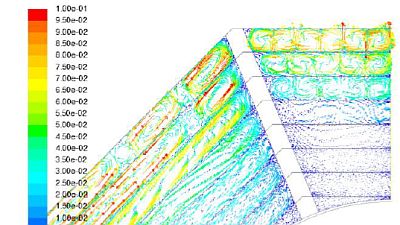
CFD modeling suitable for concentrated solar power applications: thermalinsulation based on radiation shields and thermal energy storage systems
Zavattoni Simone - SUPSI - University of Applied Sciences and Arts of Southern Switzerland (Switzerland)
Montorfano Davide - SUPSI - University of Applied Sciences and Arts of Southern Switzerland (Switzerland)
Gaetano Antonio - SUPSI - University of Applied Sciences and Arts of Southern Switzerland (Switzerland)
Di Stefano Gian Maria - SUPSI - University of Applied Sciences and Arts of Southern Switzerland (Switzerland)
Barbato Maurizio - SUPSI - University of Applied Sciences and Arts of Southern Switzerland (Switzerland)

PRESENTATION
Abstract
The present study illustrates the application of CFD simulations to model the behavior of an experimental rock-bed thermal energy storage (TES) system and a multilayer radiative shields thermal insulation system suitable for concentrated solar power (CSP) plants.
Sensible heat storage is the most simple and economical method to store thermal energy. Packed beds can be considered as representative solutions for sensible heat storage and even the most suitable for air-based solar systems. A packed bed is composed by a solid matrix, made by randomly packed rocks of a given diameter, contained in an insulated vessel. The TES system behavior was analyzed by means of time-dependent 3D CFD simulations; the porous media approach was exploited to model the packed-bed region. Heat transfer in the porous region was computed with the application of an advanced model which accounts for all the non-convective heat transfer mechanisms. This so-called effective thermal conductivity (ETC), as well as the porosity variation with the packed-bed depth, were implemented into the solver via purpose-built user defined functions (UDF). Experimental data were used to validate CFD simulations.
The thermal insulation system, based on the radiation shields concept, was analyzed by means of steady 2D CFD simulations. Heat flux in the cross section of a cylindrical pipe was studied analyzing all, conductive, convective and radiative contributions. This analysis brought to identify and optimize some relevant phenomena and nontrivial details needed for an insulating multilayer system design, such as number, distance and geometry of the shields, surface emissivity, vacuum effectiveness and mechanical contact influence. To compare the multilayer insulating system with standard solid insulating materials, an equivalent thermal conductivity was calculated. Finally, an experimental proof of concept was successfully made.
CFD simulations were performed with Fluent code from ANSYS.
